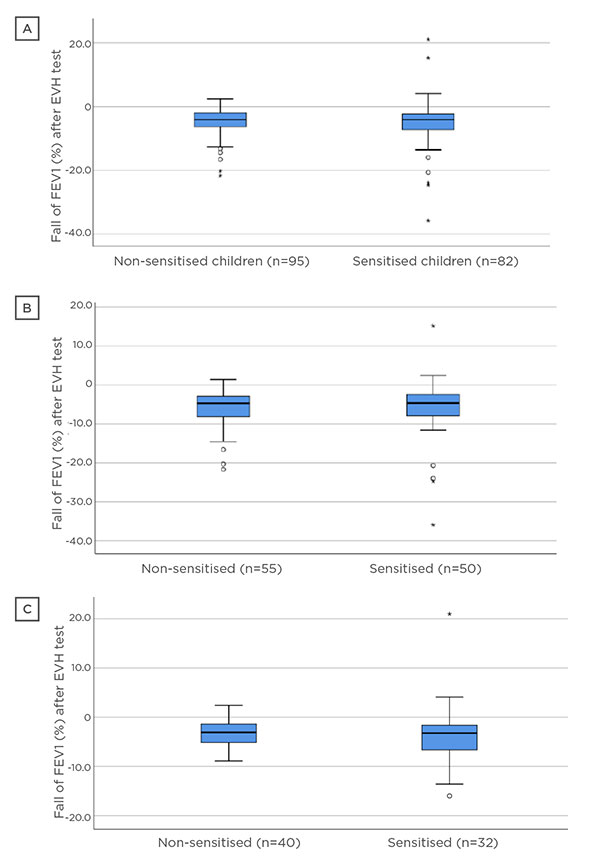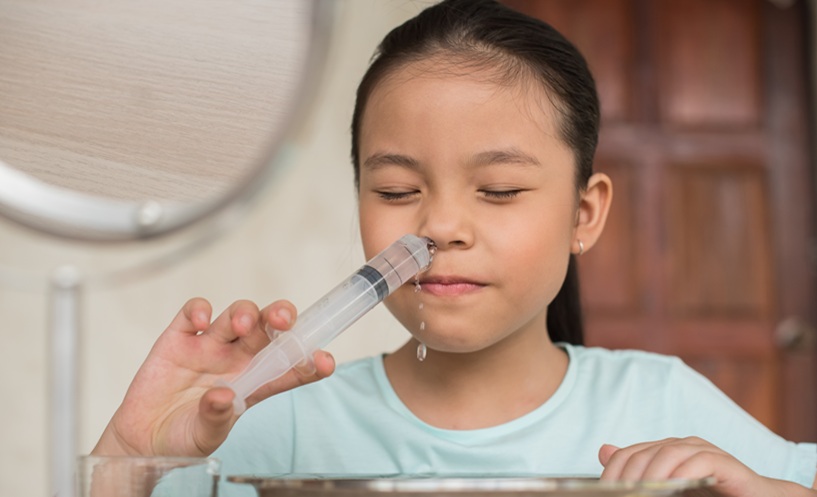BACKROUND AND AIMS
Eucapnic voluntary hyperventilation (EVH) test is feasible among children aged 10–16 years in diagnosing asthma and dysfunctional breathing.1 Aeroallergen sensitisation increases bronchial hyper-responsiveness (BHR).2,3 The EVH test decreases exhaled nitric oxide among children.4 There are no studies regarding allergic sensitisation compared to the EVH result. The authors evaluated the effect of aeroallergic sensitisation to fall of forced expiratory volume in 1 second (FEV1) after the EVH test.
MATERIALS AND METHODS
The authors recruited 134 patients aged 10–16 years with a history of exercise-induced dyspnoea and 100 healthy control children to undergo EVH testing for 6 minutes in University Hospitals of Turku and Kuopio, Finland, between 2013 and 2016. All children underwent a 6-minute EVH test according to European Respiratory Society (ERS) guidelines.5
Serum IgE levels to birch, timothy, mugwort, cat, dog, horse, house dust mite, and Cladosporium herbarum were measured by Phadiatop™ (Phadia AB, Uppsala, Sweden) in a total of 177 of 234 children (105 cases and 72 controls). Children with specific IgE ≥0.35 kU/L to any allergen were considered sensitised.
SPSS version 22 (IBM, Armonk, New York, USA) was used for the statistical analysis. For continuous data, the Mann–Whitney U test was used and for categorical data chi-squared tests were used. The Spearman correlation test was used for the correlation analysis. The Ethics Committee of the Hospital District of Southwest Finland approved the study.
RESULTS
The median age of all children was 13.4 years. In total, 82 of 177 children (46%) were sensitised by at least one aeroallergen. There were no differences among sensitised and non-sensitised children according to age (13.5 versus 13.4 years; p=0.79); being male (60% versus 55%; p=0.50); having atopic eczema (38% versus 24%; p=0.054); having a furry animal (48% versus 57%; p=0.25); parental asthma (28% versus 23%; p=0.48); or parental smoking (12% versus 21%; p=0.12). Sensitised children more often had a prior asthma diagnosis (29% versus 15%; p=0.020) and they more often had chronic rhinitis (59% versus 20%; p<0.001).
The median fall of FEV1 after the EVH test was similar in both sensitised and non-sensitised groups (median values of -4.1% and -4.1%; p=0.69 [hl]Figure 1A[/hl]). Similar findings were observed among patients and controls (Figure 1B and 1C), including for the proportion of children having a minimum 10% fall of FEV1 after the EVH (13% versus 8.4%; p=0.29).

Figure 1: Fall in FEV1 after EVH test in A) all children (p=0.069); B) patients (p=0.85); and C) controls (p=0.53).
Mann–Whitey U was used for statistics for all analyses.
EVH: Eucapnic voluntary hyperventilation; FEV1: forced expiratory volume in 1 second.
In post-hoc analysis, similar results were observed among cases and controls. In addition, there were no differences between the groups during the pollen season between 15th April and 15th August.
In correlation analysis, there were no significant findings between fall of FEV1 and specific IgE level to birch, timothy, mugwort, cat, dog, or house dust mite.
CONCLUSION
Aeroallergen sensitisation did not have an effect on EVH results.







